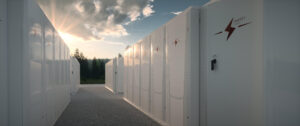Battery Basics for Energy Storage Systems
admin
- 0
Basics for Energy Storage Systems
A battery is an essential part of energy storage systems. They store energy and help power a home when the grid is unable to supply it. Unlike fossil fuels, which require longer ramp-up times, batteries store energy instantly. This means that even if the grid has a problem, a battery can quickly provide the energy it needs.
The best way to design an effective battery energy storage system is to start with a comprehensive understanding of how they work. Knowing how batteries work and the battery type will help you choose the right system for your home. There are many battery types available, including AGM, deep-discharge (DoD), lithium-ion, and other types.
A battery’s capacity determines how much power it can store. Batteries are rated in kilowatt-hours or watts. They are also rated in volts or amps. The higher their capacity, the more energy they store. The more capacity a battery can store, the better.
The most common type of battery used for energy storage systems is a lithium-ion battery. It has long been used in laptops and cellphones and has been the preferred choice for stationary storage systems. Li-ion manufacturers have been building up their manufacturing capacity at a rapid rate in the last decade. As a result, battery prices have come down.
The next thing to consider is how much power a battery can supply. A lithium-ion battery is a great option because it has a very long lifespan. It can last anywhere from ten to forty years. As a bonus, it’s one of the most environmentally friendly and energy-efficient types of battery.

Battery Basics for Energy Storage Systems
The three-tiered BESS system is made up of three components: a system main controller MBMS, a battery string management module SBMS, and a battery monitoring unit BMU. Some systems can have as many as 60 BMUs. It’s best to work with a single supplier to get the right combination for your energy storage needs.
Electrochemical storage is another option for energy storage. It’s very compact and has high power density. This makes them ideal for home and business use. This type of energy storage is typically used in conjunction with solar battery storage system. This is a great solution for home and business owners who want to reduce their carbon footprint.
BESS helps balance the load between on-peak and off-peak times. As the demand for electricity increases throughout the day, it increases the cost. In contrast, demand drops during off-peak hours. By storing electricity in batteries, it can help customers save money on electricity. This is known as peak shaving, and this type of energy storage can help you save a lot of money.
The technology behind battery energy storage systems is becoming more sophisticated. They use intelligent algorithms to coordinate energy production. They can also be charged with renewable energy. Furthermore, these systems have computerised control systems that decide when to release energy to the grid. This feature helps the grid keep costs down and electricity flowing.

